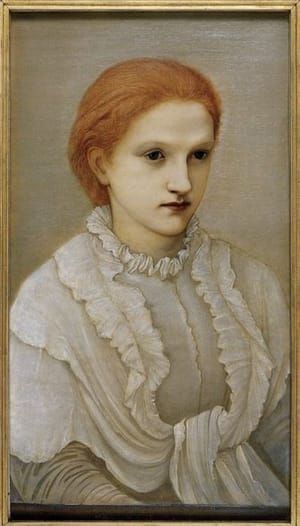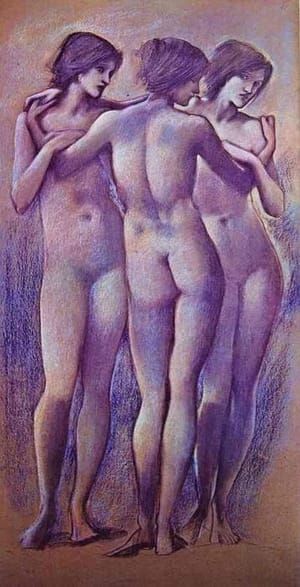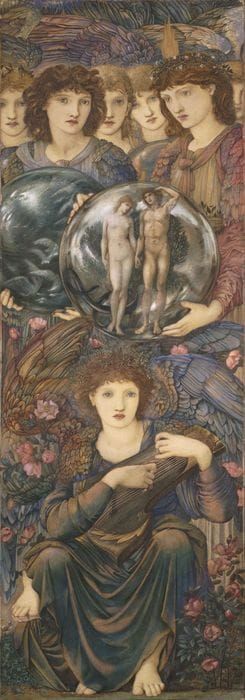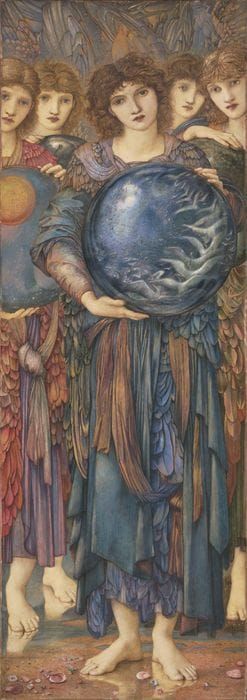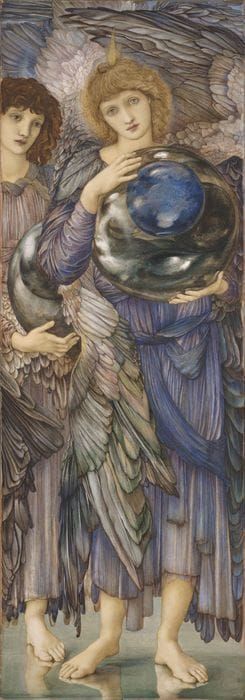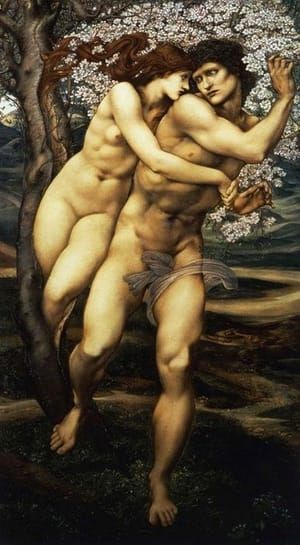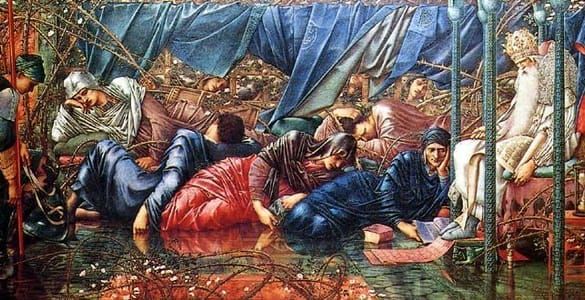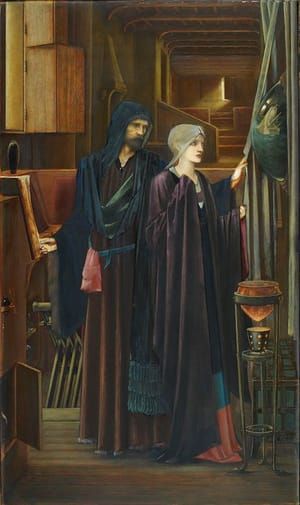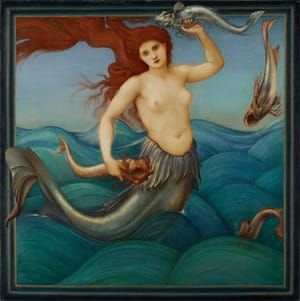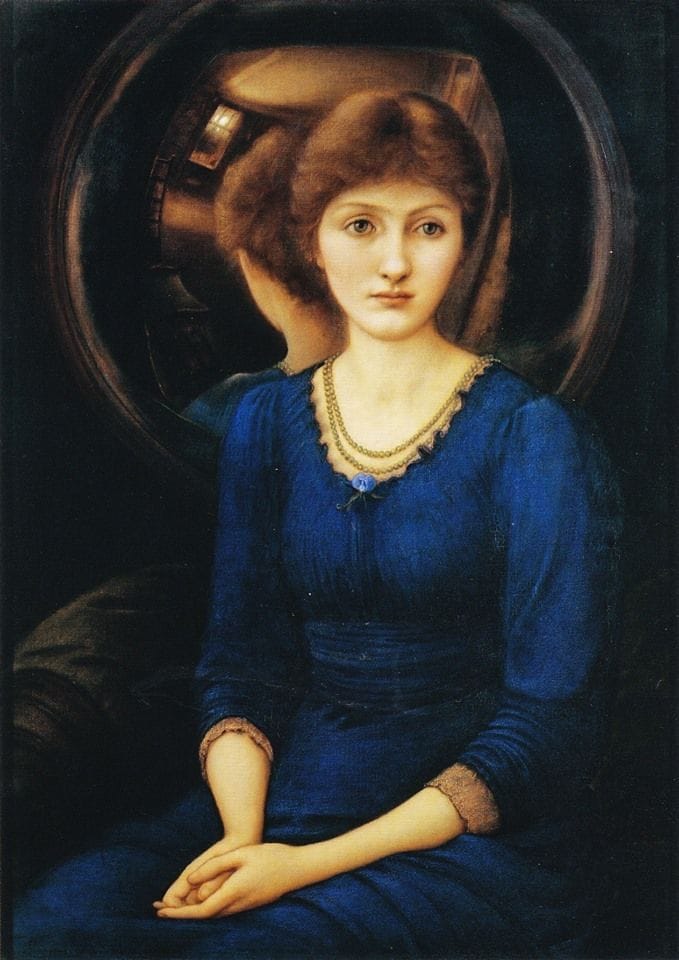

Margaret Burne-Jones, 1885
Edward Burne-Jones
...The overall domestic interior of the van Eyck painting would also inspire the second wave of Pre-Raphaelites albeit with more of a dream-like quality akin to that find in Symbolism or Aestheticism. Burne-Jones’ picture of his daughter, Margaret Burne-Jones, which a Pall Mall critic described as having ‘a mirror worthy of van Eyck’ is one such example. There is something both dreamlike and angelic about Burne-Jones’ use of the mirror in this work.
Margaret sits in front of, perhaps looking at, a domestic space which the viewer can see being reflected in the convex mirror. She sits demurely in a Marian blue dress: she is the Virgin prior to her marriage (indeed this image was painted only a few months prior to her wedding to John William Mackail).
However, it seems that Margaret does not inhabit the domestic space as reflected in the mirror, because her physical world is void of any domestic detail. The foreground which would typically depict the real domestic space, becomes inverted with the ideal dreamlike world and the ‘real’ domesticity is contained within the mirror. Burne-Jones, as perhaps over-zealous father and protector of his youngest daughter, secures Margaret forever within the dream-like world of his making, not the domestic space of another man’s which he relegates to the beyond. In doing so, Burne-Jones allows Margaret’s youthful idealism to remain intact, or rather she remains virgo intacta. This is where the notion of the angelic comes into play, for the mirror-as-halo serves to protect Margaret’s Marian perfection and innocence, and to separate her from her impending marital domesticity.
This painting shares the liminal atmosphere which Burne-Jones is now famous for but it also demonstrates the growing fashion for the middle-class purchase of mass produced van Eyckian mirrors. In terms of middle-class domesticity the Margaret painting recalls Henry Treffry Dunn’s watercolor of Dante Gabriel Rossetti’s Bedroom at Tudor House, 16 Cheyne Walk (1872, Wightwick Manor). Rather than the dark domestic future awaiting Margaret, Rossetti’s domestic space is an aesthetic one as exemplified by the blue and white porcelain, the Chinese bronzes and peacock feathers. The division between early Pre-Raphaelite interests in Christian narratives was by this time replaced within a secular space that further validated the mining of the Arnolfini Portrait....
[https://madeleineemeraldthiele.wordpress.com/2017/10/24/reflections-van-eyck-and-the-pre-raphaelites/]
© 1885 Edward Burne-Jones
Edward Burne-Jones
artistArthur
coming soon
